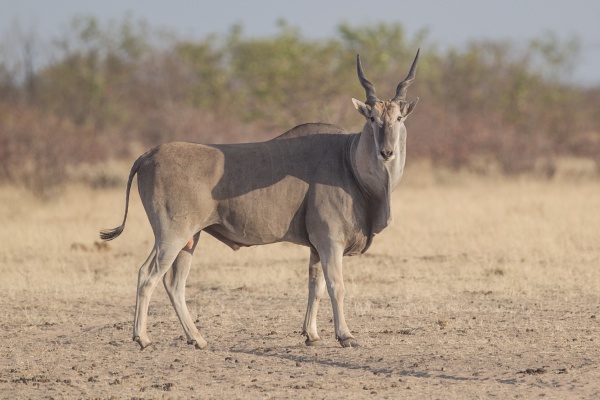Facts About Common eland
The common eland, also known as the southern eland or eland antelope, is a majestic animal that roams the savannahs and plains of East and Southern Africa. Belonging to the Bovidae family and the genus Taurotragus, these antelopes are among the largest in the world. Adult males can stand up to 1.6 meters tall at the shoulder and weigh as much as 942 kilograms, while females are somewhat lighter, weighing between 500 and 600 kilograms. The common eland is the second-largest antelope globally, slightly smaller than the giant eland. The species was first described by Peter Simon Pallas in 1766.
Primarily herbivorous, these antelopes have a diet consisting of grasses and leaves. They typically form large herds, sometimes numbering up to 500 individuals, though they are not territorial. They thrive in environments with varied vegetation and communicate through a mix of vocalizations, body postures, and a behavior known as the flehmen response. Humans have utilized common elands for leather, meat, and milk, and they have even been domesticated in certain regions.
Native to several African countries, the common eland has unfortunately disappeared from some areas, like Burundi. Despite a declining population trend, the International Union for Conservation of Nature (IUCN) classifies them as "Least Concern." Physically, males are larger and sport spiral horns, a distinctive feature. Though generally slow-moving, these antelopes can leap impressive heights, up to 2.5 meters vertically.
Common elands inhabit open plains and foothills, favoring semi-arid regions with bushy vegetation while avoiding dense forests and deserts. They are a common sight in various national parks and reserves, such as Kruger National Park in South Africa and Serengeti National Park in Tanzania. Nomadic by nature, they are most active during the twilight hours, foraging for food. Communication within the species includes a range of gestures, sounds, and behaviors.
Threats like habitat loss and poaching pose significant challenges to their survival. However, conservation efforts have helped stabilize their numbers in countries like Namibia, Botswana, and Zimbabwe. Interestingly, common elands are also farmed for their meat and milk, with successful domestication in places like South Africa and Russia. They are known for their gentle temperament but require large grazing areas and additional food supplies.

 Malawi
Malawi